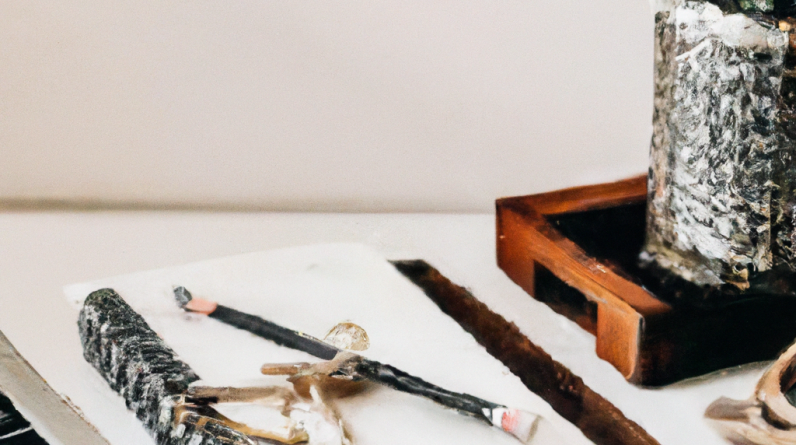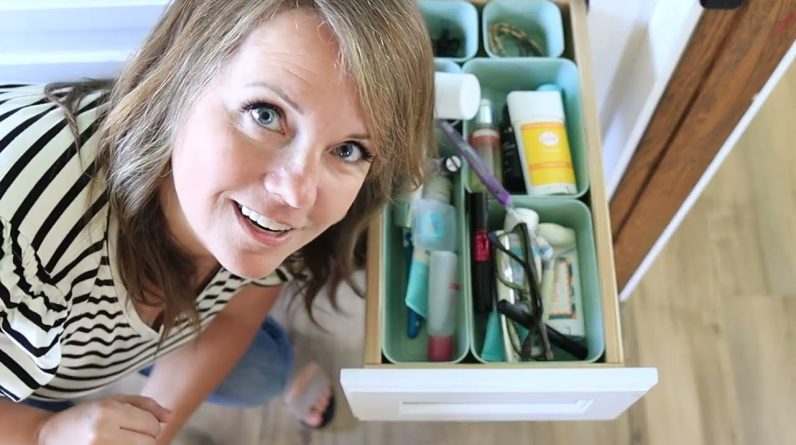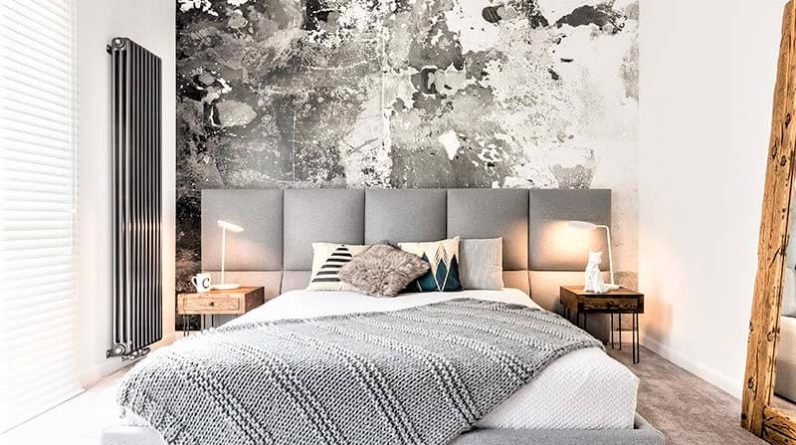
Looking to transform your cluttered room into a serene and organized space? Look no further than the power of minimalism. In this article, you’ll discover simple and practical tips to declutter your room using the principles of minimalism. From letting go of excess belongings to embracing clean lines and simplicity, these strategies will help you create a peaceful and inviting environment in no time. Say goodbye to chaos and hello to a minimalist haven that promotes clarity and tranquility.
Table of Contents
1. Set your intention
Define your goals
When embarking on a journey to declutter your room using minimalism, it’s important to begin by defining your goals. Ask yourself what you hope to achieve through this process. Are you aiming to create a more peaceful and organized space? Do you want to simplify your life and reduce the number of belongings you own? Defining your goals will provide you with a clear direction and motivation throughout the decluttering journey.
Understand the principles of minimalism
To effectively declutter your room with minimalism, it’s crucial to understand the principles behind this lifestyle. Minimalism is about focusing on what truly adds value and joy to your life while eliminating excess. It encourages simplicity, intentionality, and mindfulness. By adopting a minimalistic approach, you’re giving yourself permission to let go of unnecessary material possessions and embrace a lighter, more intentional way of living.
Visualize your ideal space
Before diving into the decluttering process, take a moment to visualize your ideal space. Imagine how you want your room to look and feel once it’s decluttered and organized. Use this vision as inspiration and motivation throughout the decluttering journey. Visualizing your ideal space will help you stay focused and committed, making it easier to make decisions about what to keep, donate, or sell.
2. Prepare for decluttering
Gather necessary supplies
Before you begin decluttering your room, gather the necessary supplies to make the process smooth and efficient. Some essential items include storage bins or boxes for sorting, trash bags for disposing of any unwanted items, cleaning supplies to tidy up your space, and labels to categorize your belongings. Having these supplies on hand will help you stay organized and make the decluttering process more manageable.
Set aside dedicated time
Decluttering your room requires time and focus. Set aside dedicated blocks of time to commit to this process. You may choose to work on it for a few hours each day or dedicate a weekend to tackle the task. The key is to allocate uninterrupted time so that you can fully immerse yourself in the decluttering process without distractions. By setting aside dedicated time, you’ll make steady progress toward your decluttering goals.
Create a plan of action
Creating a plan of action will help you navigate the decluttering process more efficiently. Start by breaking down the task into smaller, manageable steps. Decide which areas of your room you’ll tackle first and establish priorities. Consider creating a schedule or checklist to keep track of your progress and ensure you cover all areas of your room. Having a clear plan in place will keep you focused and organized throughout the decluttering journey.

This image is property of www.fillingthejars.com.
3. Sort and categorize your belongings
Start with one area
When you begin decluttering your room, it’s important to start with one area at a time. Trying to tackle your entire room all at once can quickly become overwhelming and hinder your progress. Start with a small section, such as a drawer or a shelf, and work through it methodically. Once you successfully declutter one area, move on to the next. By breaking down the task into smaller parts, you’ll feel a sense of accomplishment and remain motivated to continue decluttering.
Use the 4-box method
The 4-box method is a popular approach to decluttering that involves sorting your belongings into four categories: keep, donate, sell, and trash. As you go through each item in the area you’re decluttering, decide which category it belongs to and place it in the corresponding box. The “keep” box should only include items that you genuinely need or truly love. The items in the donation and sell boxes can be given away or sold to declutter your space and possibly earn some extra money. Any items that are damaged or no longer useful should be placed in the trash box for disposal.
Create categories for sorting
In addition to the 4-box method, creating specific categories for sorting can further streamline the decluttering process. For example, you can create categories such as clothing, books, electronics, sentimental items, and so on. As you sort through your belongings, assign each item to its respective category. This approach allows you to declutter and organize your room simultaneously. It also makes it easier to find and access specific items once the decluttering process is complete.
4. Keep, donate, or sell
Make decisions based on purpose and joy
When deciding whether to keep, donate, or sell an item, consider its purpose and the joy it brings to your life. Minimalism encourages us to surround ourselves only with items that we truly need or deeply cherish. Ask yourself if the item serves a practical purpose or brings significant happiness. If the answer is no, it may be time to let go of it. By making decisions based on purpose and joy, you’ll ensure that your room is filled with items that add value to your life.
Create a designated space for donations
As you declutter your room, you’ll likely gather a collection of items to donate. It’s important to establish a designated space for these donations during the process. Find a corner or room in your home where you can temporarily store the items before taking them to a donation center or arranging for pick-up. Having a designated space for donations will prevent clutter from re-entering your room and ensure that the items find their way to those in need.
Consider selling valuable items
If you come across any valuable items during the decluttering process, consider selling them. Platforms like online marketplaces, social media groups, or local consignment stores provide opportunities to turn unwanted items into extra cash. Take the time to research the market value of these items and determine the best platform for selling them. Selling valuable items not only helps declutter your room but also puts some money back in your pocket.
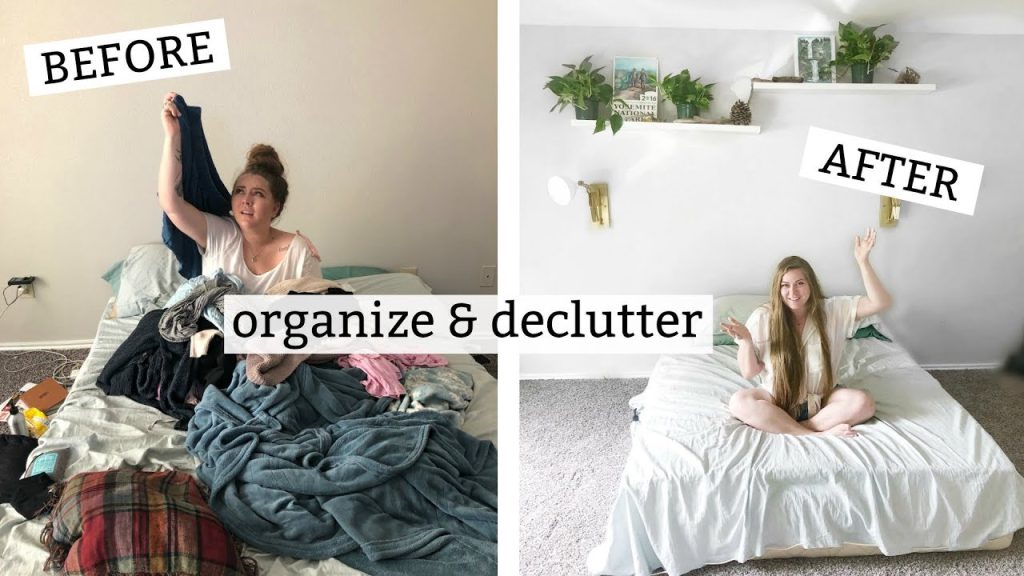
This image is property of i.ytimg.com.
5. Organize with minimalist systems
Implement storage solutions
To maintain a clutter-free and organized room, it’s essential to implement storage solutions that align with minimalist principles. Invest in storage bins, baskets, or boxes that allow you to neatly store and categorize your belongings. Opt for minimalist, sleek designs that blend seamlessly with your room’s aesthetics. Avoid excessive storage solutions that may tempt you to accumulate unnecessary items. By implementing minimalist storage solutions, you’ll create a visually appealing and functional space.
Utilize vertical space
When organizing your room, don’t overlook the power of utilizing vertical space. Install shelves or wall-mounted organizers to optimize the available wall space. This allows you to store items in a way that doesn’t take up valuable floor space. Utilizing vertical space not only maximizes storage capacity but also adds a visually pleasing element to your room. Keep frequently used items within easy reach and reserve higher shelves for less frequently accessed items.
Keep frequently used items accessible
To create an efficient and practical space, ensure that frequently used items are easily accessible. Place them in prime locations, such as within arm’s reach or at eye level. This eliminates the need to search through clutter or disrupt the organization when you need those items. By keeping frequently used items accessible, you’ll streamline your daily routines and maintain an organized room effortlessly.
6. Create a functional layout
Optimize furniture arrangement
The layout of your furniture plays a significant role in the functionality and flow of your room. Take some time to evaluate your current furniture arrangement and consider ways to optimize it. Arrange your furniture in a way that allows for easy movement and access to all areas of your room. Minimize the number of pieces to avoid overcrowding and create a sense of openness. Experiment with various layouts until you find one that maximizes both space and functionality.
Allow for open space
One of the key principles of minimalism is embracing open space. Avoid filling your room with unnecessary furniture or decor. Instead, allow for open space that promotes a sense of calm and tranquility. Open space also makes it easier to clean and maintain your room. Resist the urge to fill every nook and cranny, and leave room for breathing space. By embracing open space, you’ll create a visually pleasing and peaceful environment.
Consider multi-purpose furniture
When decluttering your room, consider incorporating multi-purpose furniture to maximize functionality. Opt for pieces that serve dual purposes, such as a storage ottoman that doubles as seating or a bed with built-in drawers for additional storage. Multi-purpose furniture helps reduce the need for multiple pieces, saving space and decluttering your room. It allows you to have the necessary functionality without sacrificing valuable space.
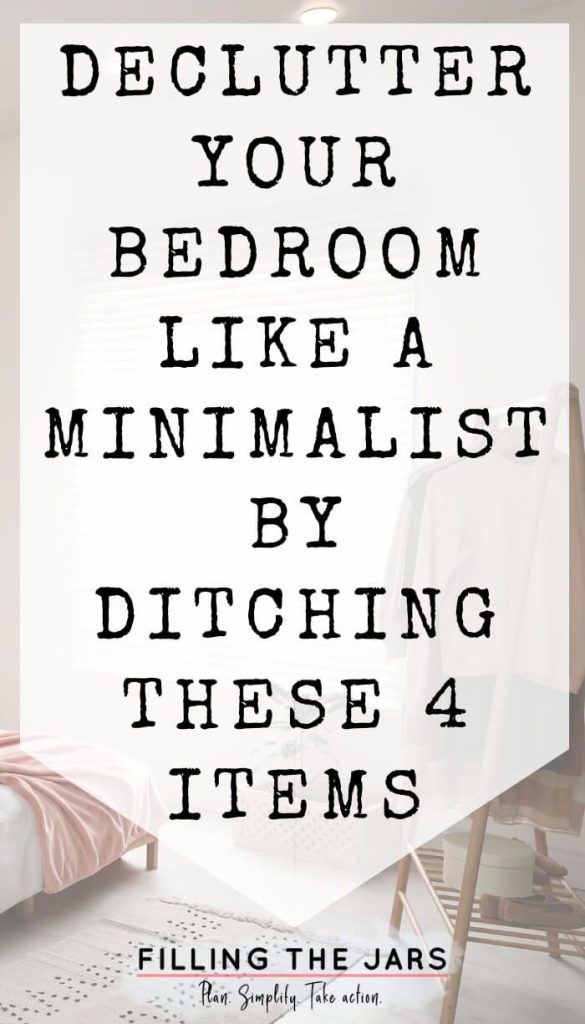
This image is property of i.pinimg.com.
7. Practice the one in, one out rule
Prevent future clutter
To maintain a clutter-free room, it’s important to adopt the “one in, one out” rule. This rule states that for every new item you bring into your room, you must remove one item. By adhering to this rule, you prevent future clutter and ensure that your room remains organized and minimalistic. Before making a new purchase, ask yourself if it’s truly necessary and if you’re willing to part with an existing item to make room for it.
Adopt mindful shopping habits
Another way to prevent future clutter is to adopt mindful shopping habits. Before making a purchase, pause and consider whether the item aligns with your goals and adds value to your life. Avoid impulse buying and instead focus on intentional purchases. By being mindful of your shopping habits, you’ll bring fewer unnecessary items into your room and promote a clutter-free environment.
Regularly evaluate new items
Even with the best intentions, new items may still find their way into your room. To avoid accumulating clutter, make it a habit to regularly evaluate new items. Set aside time every few months to reassess your belongings and determine if any new items are no longer serving a purpose or bringing you joy. By regularly evaluating new items, you’ll prevent clutter from building up and maintain a minimalist and organized room.
8. Adopt a daily decluttering routine
Set aside a few minutes each day
Maintaining a clutter-free room becomes easier when you adopt a daily decluttering routine. Set aside a few minutes each day to tidy up and put items back in their designated places. Use this time to address any items that may have been left out or clutter that has accumulated throughout the day. By incorporating a daily decluttering routine into your schedule, you’ll prevent clutter from piling up and maintain an organized space effortlessly.
Put items back in their designated places
One of the secrets to a clutter-free room is consistency in putting items back in their designated places. Develop the habit of immediately returning items to their rightful spots after use. This simple practice helps maintain organization and prevents items from being misplaced or creating unnecessary clutter. By consistently putting things back where they belong, you’ll enjoy a tidy and stress-free environment.
Maintain a clutter-free environment
In addition to daily decluttering, it’s crucial to maintain a clutter-free environment by regularly reassessing your belongings and ensuring everything has a designated place. Take a few moments every few weeks or months to evaluate any areas that may have become cluttered. Make adjustments where necessary and recommit to the principles of minimalism. By continuously maintaining a clutter-free environment, you’ll reap the benefits of an organized and peaceful room.

This image is property of static.houselogic.com.
9. Embrace digital minimalism
Reduce digital clutter
In today’s digital age, decluttering doesn’t only apply to physical spaces but also to our digital lives. Take some time to declutter your digital devices by organizing files, deleting unnecessary documents, and clearing out unused apps. Remove any digital clutter that hampers your productivity or causes unnecessary stress. Streamlining your digital life will create a more efficient and clutter-free experience across all aspects of your life.
Organize digital files
To maintain a sense of order in your digital life, it’s essential to organize your files. Create a logical folder structure on your computer or cloud storage system. Label files clearly and appropriately so that you can easily locate them when needed. Regularly review and delete unnecessary files or duplicates to prevent digital clutter from accumulating. By organizing your digital files, you’ll save time and eliminate frustration when searching for specific documents or information.
Limit distractions from technology
As you declutter your room, be mindful of limiting distractions from technology. Designate specific areas or times in your room where you disconnect from screens and focus on relaxation, reading, meditating, or engaging in other non-digital activities. By creating boundaries between technology and your living space, you’ll maintain a balanced and serene environment.
10. Seek support and accountability
Find a decluttering buddy
Decluttering can be an overwhelming task, but it becomes more enjoyable and manageable when you have a decluttering buddy. Find a friend or family member who shares your decluttering goals and embark on the journey together. You can offer each other support, share progress, and exchange ideas. Having a decluttering buddy increases motivation and provides accountability, making the process more enjoyable and effective.
Join minimalist communities
To further enhance your decluttering experience, consider joining minimalist communities. Online platforms and social media groups provide opportunities to connect with like-minded individuals who are going through the same journey. These communities offer support, guidance, and inspiration, as well as a platform to share your progress and challenges. Engaging with minimalist communities keeps you motivated and reinforces your commitment to a clutter-free life.
Share progress and challenges
Throughout your decluttering journey, make an effort to share your progress and challenges with others. Whether it’s through social media, a blog, or simply discussing it with friends and family, sharing your experiences holds you accountable and helps you stay focused on your goals. Celebrate your achievements and seek support during challenging times. By sharing your journey, you not only inspire others but also create a supportive network that encourages your continued decluttering success.
By following these steps and embracing minimalism, you can declutter your room and create a space that brings you peace, joy, and functionality. Remember, it’s a journey, and progress may take time. Stay committed, take it one step at a time, and enjoy the rewards of a clutter-free environment that supports your wellbeing.

This image is property of quietminimal.b-cdn.net.






